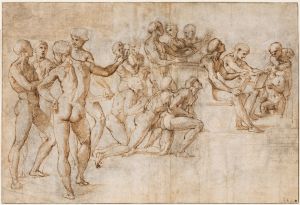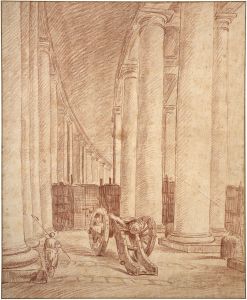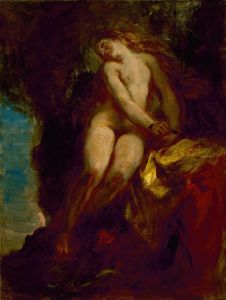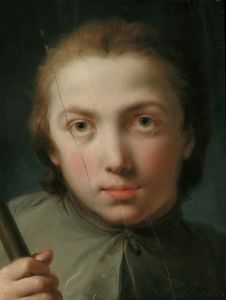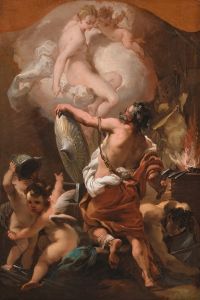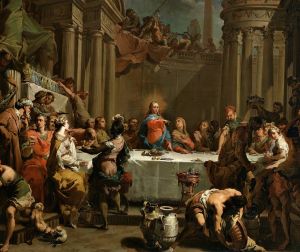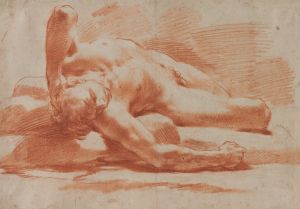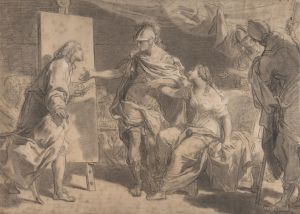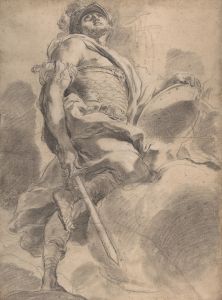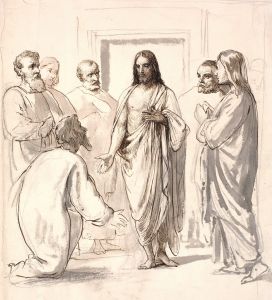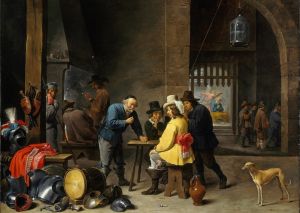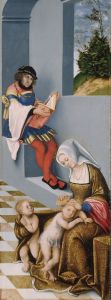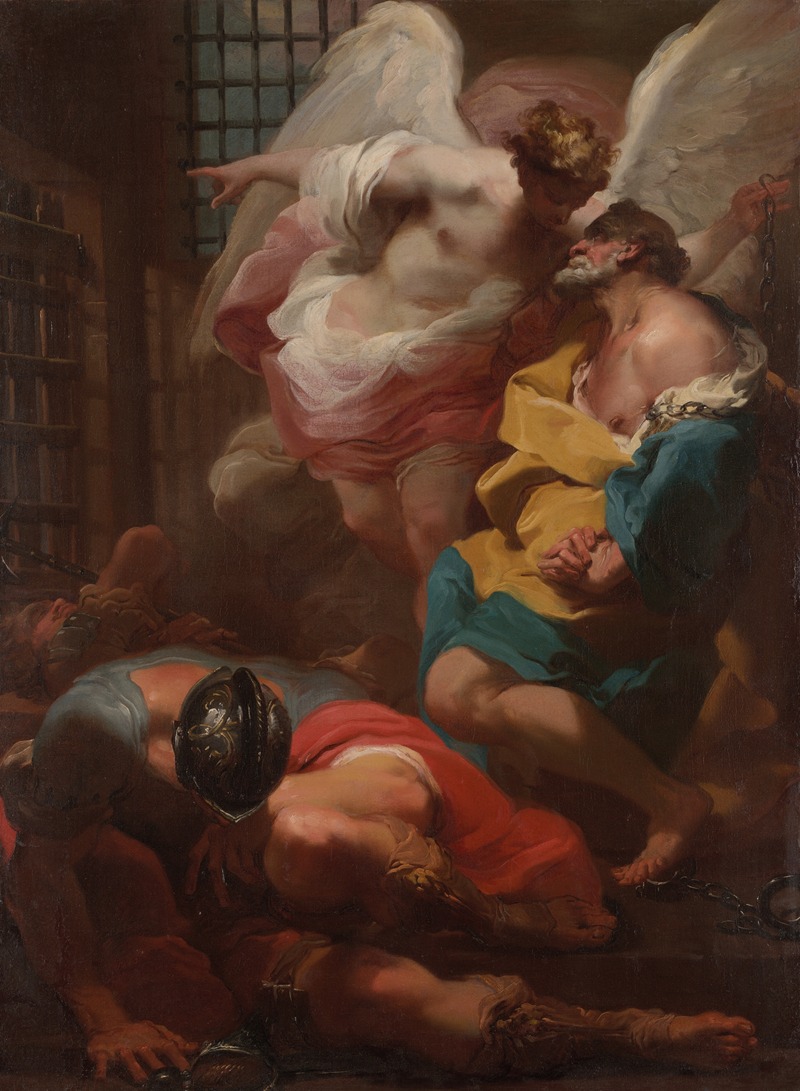
The Liberation of Saint Peter
A hand-painted replica of Gaetano Gandolfi’s masterpiece The Liberation of Saint Peter, meticulously crafted by professional artists to capture the true essence of the original. Each piece is created with museum-quality canvas and rare mineral pigments, carefully painted by experienced artists with delicate brushstrokes and rich, layered colors to perfectly recreate the texture of the original artwork. Unlike machine-printed reproductions, this hand-painted version brings the painting to life, infused with the artist’s emotions and skill in every stroke. Whether for personal collection or home decoration, it instantly elevates the artistic atmosphere of any space.
"The Liberation of Saint Peter" is a notable painting by the Italian artist Gaetano Gandolfi, created in the late 18th century. Gaetano Gandolfi (1734–1802) was a prominent painter and draftsman from Bologna, Italy, known for his contributions to the late Baroque and early Neoclassical periods. His works are characterized by their dynamic compositions, vibrant colors, and expressive figures.
This painting depicts the biblical story of the liberation of Saint Peter from prison, as recounted in the Acts of the Apostles (Acts 12:6-11). According to the narrative, Saint Peter was imprisoned by King Herod Agrippa, but an angel of the Lord appeared and miraculously freed him. Gandolfi's interpretation of this event captures the dramatic moment of Peter's release.
In the composition, Saint Peter is shown in the center, with the angel guiding him out of the prison. The angel is often depicted with a serene and determined expression, symbolizing divine intervention and guidance. Saint Peter, on the other hand, appears astonished and grateful, emphasizing the miraculous nature of his escape. The use of light and shadow in the painting highlights the contrast between the dark, oppressive prison environment and the divine light brought by the angel.
Gandolfi's mastery of color and light is evident in this work. The warm, glowing light surrounding the angel contrasts with the cooler, darker tones of the prison, creating a sense of hope and divine presence. The artist's skillful use of chiaroscuro enhances the three-dimensionality of the figures and adds to the overall dramatic effect.
The painting also reflects Gandolfi's ability to convey emotion through facial expressions and body language. The figures are rendered with great attention to detail, and their poses and gestures effectively communicate the tension and relief of the scene. This emotional depth is a hallmark of Gandolfi's style and contributes to the painting's impact.
"The Liberation of Saint Peter" is an excellent example of Gandolfi's work and his contribution to religious art in the 18th century. It showcases his technical proficiency, his ability to tell a compelling story through visual means, and his sensitivity to the emotional and spiritual dimensions of his subjects.
This painting is part of the collection of the Pinacoteca Nazionale di Bologna, one of Italy's most important art museums. The museum houses a significant collection of works by Bolognese artists, including those from the Baroque period, and serves as a testament to the rich artistic heritage of the region.
In summary, "The Liberation of Saint Peter" by Gaetano Gandolfi is a masterful depiction of a biblical miracle, characterized by its dramatic composition, effective use of light and shadow, and expressive figures. It remains an important work within the context of 18th-century Italian religious art and continues to be appreciated for its artistic and historical significance.





